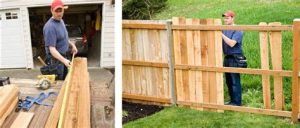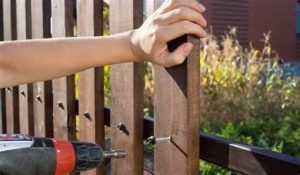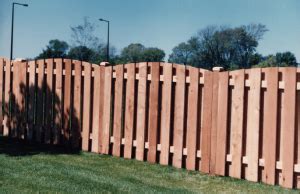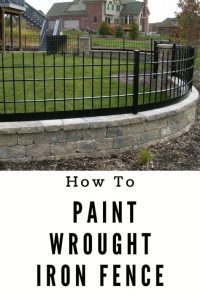Learn how to assess your yard, select suitable fence posts, protect plants, prevent erosion, and utilize proper installation techniques for your fencing project.Installing a wrought iron fence can enhance the beauty and security of your property, but it’s essential to do so without causing damage to your yard. Many homeowners overlook the potential impacts on their landscaping, which can lead to costly repairs and a compromised outdoor aesthetic. In this blog post, we’ll guide you through key considerations to help you avoid yard damage during the installation process. From assessing your yard’s condition and selecting the right fence posts to protecting existing plants and implementing erosion prevention measures, each step is crucial for a successful project. We’ll also cover proper installation techniques to ensure your new fence not only looks great but coexists harmoniously with your landscape. Let’s dive into the essential tips you need for a seamless fence installation experience.
Assessing Your Yard’s Condition
Before installing a rod iron fence, it’s crucial to carefully assess the condition of your yard. This assessment will not only help you understand the existing landscape but also allow you to make informed decisions regarding the installation process.
- Soil Quality: Check if the soil is compact, loose, or sandy. Understanding the soil type will determine how deep you need to set the fence posts.
- Drainage Issues: Look for areas in your yard that might experience pooling or excessive moisture. Good drainage is essential to maintaining the integrity of your fence.
- Vegetation: Identify any existing plants or trees that could be damaged during installation. You may need to prepare to relocate or protect them.
Moreover, be aware of any underground utilities in your yard. Before digging, contact your local utility company to locate any power, water, or gas lines that could be affected.
After evaluating these aspects, you’ll have a clearer picture of how your yard can accommodate a rod iron fence. Taking the time to assess your yard will save you from potential headaches and unexpected costs.
Choosing the Right Fence Posts
When considering a rod iron fence installation, selecting the appropriate fence posts is crucial to ensure longevity and stability. The right fence posts not only anchor your fence securely but also support its structural integrity against various environmental factors.
Materials are one of the key factors to consider when choosing fence posts.
- Wood – A classic choice that blends nicely with nature.
- Metal – Offers durability and requires less maintenance.
- Concrete – Extremely sturdy and can withstand severe weather conditions.
Each material has its own benefits and drawbacks. For instance, while wooden posts may provide an aesthetically pleasing look, they can rot or warp over time. On the other hand, metal posts are resilient but can be susceptible to rust if not treated properly. Concrete posts offer maximum strength and stability but can be more difficult to install.
Additionally, considering the height and thickness of the posts is essential. Taller and thicker posts typically provide better support for the weight of a rod iron fence and can withstand the forces of nature, such as wind and heavy rain. Make sure to consult local building codes for guidance on what dimensions are appropriate for your area.
Lastly, take into account the spacing between posts. Proper spacing is vital for the fence’s overall appearance and functionality. A standard rule of thumb is to space posts about 6 to 8 feet apart, but this may vary based on the specific design of your fence.
Protecting Plants and Vegetation
When installing a rod iron fence, it is crucial to prioritize the protection of your plants and vegetation. Since a fence can significantly alter the landscape, understanding how it interacts with your garden is essential. Proper planning ensures that your beloved plants remain unharmed during and after the installation process.
Before you begin the installation, consider mapping out your garden. Identify areas where your plants are located and take note of their root systems. Use this information to determine the best placement for the fence, ensuring it does not encroach on the critical root zones of any nearby plants.
Furthermore, during the installation process, utilize protection measures such as burlap or landscaping fabric to shield your plants from debris and potential damage. Additionally, you may want to consider erecting the fence in stages, allowing you to monitor and protect your plants closely throughout the installation.
Erosion Prevention Measures
When considering the installation of a rod iron fence, it’s crucial to take into account the potential erosion that can occur during and after the process. Erosion can undermine the foundation of your fence and lead to significant damage to your yard.
- Plant Vegetation: One of the most natural ways to combat erosion is by planting grass and shrubs. They help to anchor the soil and absorb excess water that could otherwise wash away topsoil.
- Use Mulch: Applying mulch around your plants can prevent water runoff and protect against soil erosion. It also helps retain moisture in the soil.
- Terracing: For steep areas of your yard, consider making terraces to slow down water flow. This technique can significantly reduce erosion on sloped surfaces.
Additionally, it’s important to install proper drainage systems. Structures like drainage ditches or French drains can help redirect excess water and prevent erosion around your fence posts.
To summarize, addressing potential erosion issues is essential when installing a rod iron fence. By using a combination of plant life, mulch, and proper drainage, you can protect your yard from erosion and ensure the longevity of your fence.
Proper Installation Techniques
Installing a wrought iron fence requires meticulous attention to detail to avoid damage to your yard. One of the key proper installation techniques is to accurately mark the fence line. Use a line level and stakes to ensure that you have a clear visual guide before digging any post holes.
Next, it’s essential to choose the right tools for the job. A post hole digger, a shovel, and a level should be included in your toolkit. When you start digging, make sure to remove any obstacles such as rocks and roots that could obstruct the installation process. This will not only save time but also prevent potential damage to existing structures in your yard.
During installation, keep in mind the spacing between the fence posts. Typically, spacing should be between 6 to 8 feet, depending on the height and style of your fence. Installing posts that are too close together can lead to structural weaknesses, while spacing them too far apart can compromise their support. Always consult the manufacturer’s guidelines for the best practices regarding post spacing.
| Installation Steps | Description |
|---|---|
| Mark Fence Line | Use stakes and a string line to outline the area for the fence. |
| Dig Post Holes | Ensure the holes are deep enough for stability, typically 1/3 of the post height. |
| Install Posts | Place the posts in holes and use concrete for added support. |
| Attach Panels | Securely attach the fence panels or rails to the posts. |
Frequently Asked Questions
What are the main concerns when installing a rod iron fence?
The main concerns include potential damage to existing landscaping, soil disruption, and ensuring proper installation to prevent any structural issues.
How can I protect my plants during the fence installation?
To protect your plants, mark out the area clearly, use barriers like fabric or temporary fencing, and consider relocating any vulnerable plants before installation begins.
What tools are essential for installing a rod iron fence without damaging the yard?
Essential tools include a post hole digger, level, measuring tape, and possibly a hand saw or grinder for adjustments, along with proper safety equipment.
Are there alternative methods to install a rod iron fence that will minimize yard damage?
Yes, alternative methods include using a professional installation service, which often has experience in minimizing yard damage, or considering prefabricated panels that require less excavation.
What should I do if my yard has underground utilities?
Before installation, contact your local utility companies to mark underground lines. This ensures safety and helps avoid any accidental damage to utilities.
How can I restore my yard post-installation if damage occurs?
To restore your yard, reseed any disturbed areas, replant any damaged plants, and consider using landscaping fabric and mulch to help recover the aesthetic.
Why is proper planning important before installing a rod iron fence?
Proper planning helps to minimize damage, ensures compliance with local regulations, and helps visualize the final look, leading to a smoother installation process.




